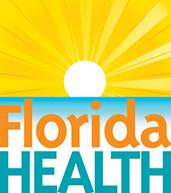It's a New Day in Public Health.
The Florida Department of Health works to protect, promote, and improve the health of all people in Florida through integrated state, county, and community efforts.
Program Components
FL-DOSE Program
- FL-DOSE@FLhealth.gov
- 850-245-4411
-
Florida Department of Health
4052 Bald Cypress Way, Bin A-24
Tallahassee, FL 32399
Non-Fatal Drug Overdoses
Key Strategy: Increase the timeliness of aggregate non-fatal drug overdose reporting with enhanced surveillance using data from Florida’s Agency for Health Care Administration (AHCA) and Florida’s Emergency Medical Services Tracking and Reporting System (EMSTARS). AHCA databases provide information on drug overdose visits to Florida emergency departments and hospitals while EMSTARS tracks drug overdose related emergency medical service events.
The Bureau of Emergency Medical Oversight (Bureau) analyzes the non-fatal drug overdose surveillance data and generates reports on rapid, reliable, and geographically-specific changes in non-fatal drug overdose rates. The Bureau generates regular state- and county-level reports from these data reporting on raw overdose numbers and analyses by demographic and contextual factors.
Fatal Drug Overdoses
Key Strategy: Increase the timeliness of aggregate fatal drug overdose reporting by using the Department’s Bureau of Vital Statistics Death Certificate (DC) data, and establishing data partnerships with the Medical Examiner (ME) community to access risk factor and toxicology data.
Available reports (e.g. toxicology, autopsy, investigator) are then requested monthly from the ME districts based on a list of decedents meeting the CDC’s case definition according to DC data. Bureau staff abstract risk factor, toxicology, and other CDC-requested data elements from the DC and ME reports into the CDC’s National Violent Death Registry System’s State Unintentional Drug Overdose Reporting System module.
The Bureau facilitates analysis of the fatal drug overdose surveillance data to compare the following characteristics of the decedents with the Florida general population: 1) Demographic Information: age, sex, race and ethnicity, area of residence, and place of death; 2) Co-Morbidities: drug dependency, chronic pain conditions, and mental health disorders; 3) Personal Characteristics: prior rehabilitation treatment, previous overdose, and prescription history. The Bureau analyzes the other substances in the decedents’ system at time of death, and whether the drug was prescription, non-prescription, and/or illicit. Semi-annual reports containing this information are made available.
In addition, the Bureau assists participating medical examiners with access to grant funding for comprehensive and specialized toxicology testing related to drug overdose fatalities.
Data Dissemination
Key Strategy: Comprehensively disseminate data to key stakeholders working to prevent or respond to drug overdoses by using multiple tools and communication vehicles.
The Bureau performs environment and stakeholder analyses to properly develop its dissemination plan. The Bureau implements the dissemination plan to share actionable insights from surveillance data findings and reports with key stakeholders.



Connect with DOH